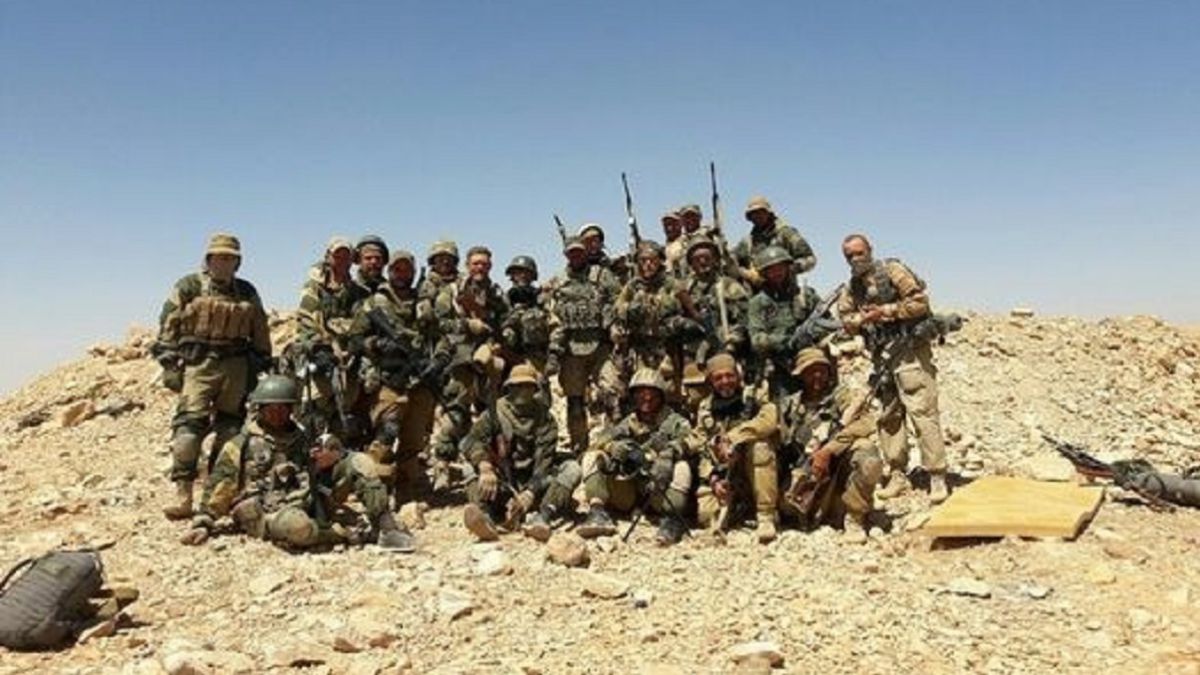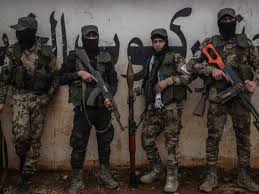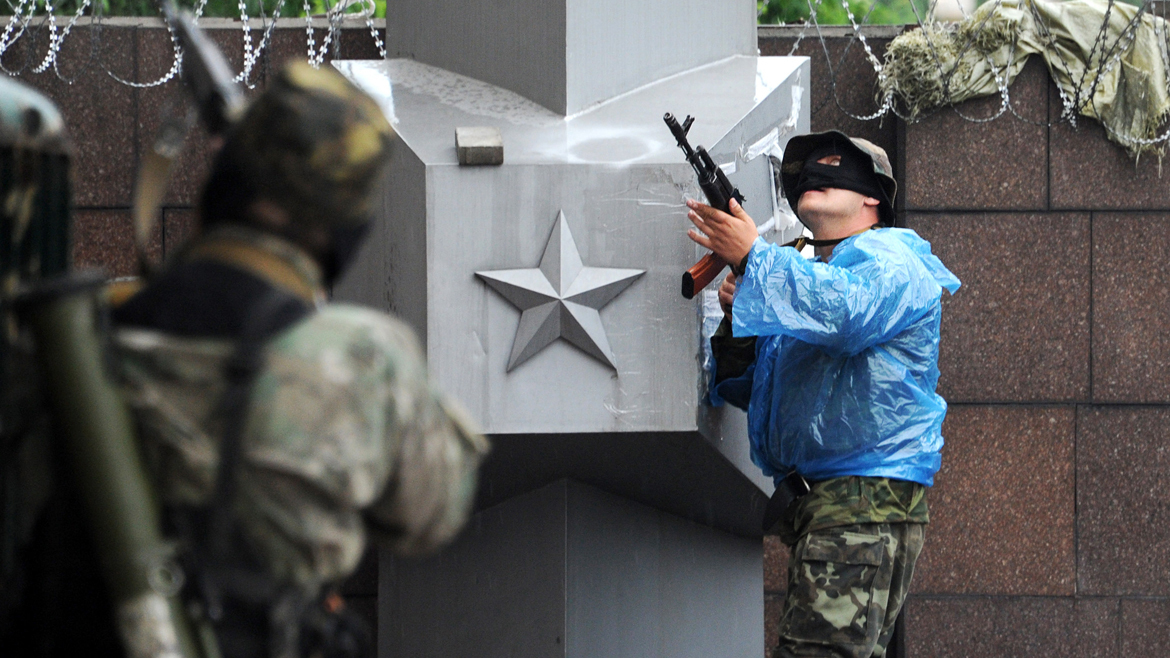:quality(85)/cloudfront-us-east-1.images.arcpublishing.com/infobae/CXPQZ7HBKJDN3NBZ33EKOFRNHY.png 420w)
Pursue the enemy until they are eliminated. Leave cities in rubble. Massive violations. End any vestige of leaders who might raise the defeated people. Make any sign of opposition disappear no matter how little it may be.
This was the tactic used by the Russian forces who came to rescue the regime of Bashar al-Assad when it was cornered in Damascus in the middle of the Syrian civil war. They were devastating. They reduced the city of Idlib to stones and used the same techniques of the ISIS and al-Qaeda jihadists to put an end to them. But most of all, they persecuted pro-Western fighters to extinction.
Now, Russian soldiers are putting into practice what they learned in Syria in the invasion of Ukraine. And they are also calling on the Syrian pro-Assad militiamen who accompanied them in the Middle East campaign to fight alongside them. More than 40,000 Syrian mercenaries have already signed up on a list presented at the Russian embassy in Damascus to go to Ukraine. Everyone has combat experience alongside the Russians. That was the basic requirement requested by the Russian embassy in Damascus. According to Defense Minister Sergei Shoigu, there are already some 16,000 “volunteers” fighting on the Russian side in the separatist enclaves of Luhansk and Donetsk.

Libyan veterans from all sides in the struggle are also presenting themselves as “volunteers” since the tripoli dictator Muammar al-Gaddafi fell in 2011. Fighters of the Khalifa Haftar forces and Benghazi militias, the Misurata Brigades and even jihadists of the Benghazi Shura Council. These veterans have been facing each other since 2014, but now they are going to fight on the same side. Many of them are veterans of the Nagorno-Karabakh War where they fought alongside Moscow-backed Armenian forces. They are known for their ferocity and savagery. They say they are “Putin's soldiers”.
“Syria was Russia's war school and then invaded Ukraine,” Jennifer Cafarella, from the Institute for the Study of War and the US Institute for National Security, told the BBC. The expert who has been following the Kremlin's military campaigns in Syria for years, a review of the Russian advance on Ukraine shows that it is the troops that were in Syria that have been most successful. “The most effective military operations we are seeing in Ukraine are those that are being carried out by forces coming from Crimea, where Russia's Southern Military District is effectively pushing to essentially secure the Ukrainian coast,” he explains.
“And this is relevant because the Southern Military District and its commander are the ones who have been leading the war in Syria. So, in many ways, it is the most experienced unit that Russians have in Ukraine and can explain why they are having relatively more success on the ground,” he adds.

The mercenaries are being offered six-month contracts for between $1,500 and $2,000 per month, although a Deir Ezzor news network in eastern Syria reported that several young people in the city had been offered only $300. In Syria, the majority of the population lives on less than one dollar a day.
According to European intelligence reports, an unknown number of members of Division 25, an elite body that is part of the structure of the Syrian Army and that until 2019 operated as a loyal militia to the country's president, Bashar al-Assad, would be traveling to Belarus under the name Tiger Forces. Also from the Eighth Brigade, which was trained and organized by Russian instructors in the framework of a restructuring of Syrian forces two years ago. Other reports indicate that a group of Chechen militiamen who were stationed in the northwestern Syrian province of Idlib, the last opposition stronghold in the Arab country, had arrived in Ukraine, but to confront the Russians, their historical enemies.
“Violence-oriented foreign extremists traveling to Ukraine pose clear risks to global security. They gain greater combat experience in the Ukrainian conflict zone and could have significant violence-oriented firepower in their home countries upon their return. Their ability to successfully plan and carry out attacks in accordance with their ideology increases enormously,” the Counter Extremism Project (CEP) warned yesterday in a report it issued from Berlin.

The activity of the so-called Wagner Group, which is directly financed by those close to Vladimir Putin and the Kremlin, is already known. These are about 10,000 mercenaries who were part of the paramilitary forces on all fronts on which Russia had any interest in recent years. They were in the wars in Sudan, the Central African Republic, the Donbas, Syria, Libya and train the special forces of Venezuela. They wear Nazi badges on their uniforms. Its main promoter is Yevgeny Prigozhin, the so-called “Putin's chef”.
The radicalized far right in several European countries, from Sweden to Germany, also enlisted to fight alongside the Russians. The accessions of groups such as the Slovak Conscripts, the Hungarian National Front and the Nordic Resistance Movement were known. They consider the authoritarian nationalism of the Moscow regime to be the example to follow in order to impose it on their countries. They have good military training. Many are former combatants of the national armies with experience in Afghanistan. Squadrons of these neo-Nazi militiamen were already in Donetsk and Luhansk supporting pro-Russian separatists before the February 24 invasion. And they faced the so-called Azov Regiment, which is also a far-right group with coincidences with its European “brothers”, but which are integrated into the Ukrainian Defence Forces. All these organizations are profusely active in the chats of the “deep Internet” and recruit new fighters there.

Last Friday, Putin stated that his welcome to foreign forces came after the influx of fighters who were encouraged to travel there in the West. He had previously denied that Syrian troops being recruited were paid. “If they see that there are these people who want of their own free will, not money, to come and help the people who live in Donbas, then we have to give them what they want and help them reach the conflict zones,” he said.
The war in Ukraine enters a very complex and dynamic process where anything is possible and no one can predict how long it will last. Russian generals believed that they would end Ukrainian defenses in a matter of hours and that they would capitulate to President Zelensky's government just two or three days later. The strong Ukrainian resistance, reinforced by Western armament, proved that the Moscow generals were very wrong. It's been 20 days of war and they still haven't been able to take the major cities. They are in dire need of fresh, motivated, well-trained, experienced and savagery troops, such as that of the Syrian and Libyan mercenaries, if they want to continue their advancement.
KEEP READING:
